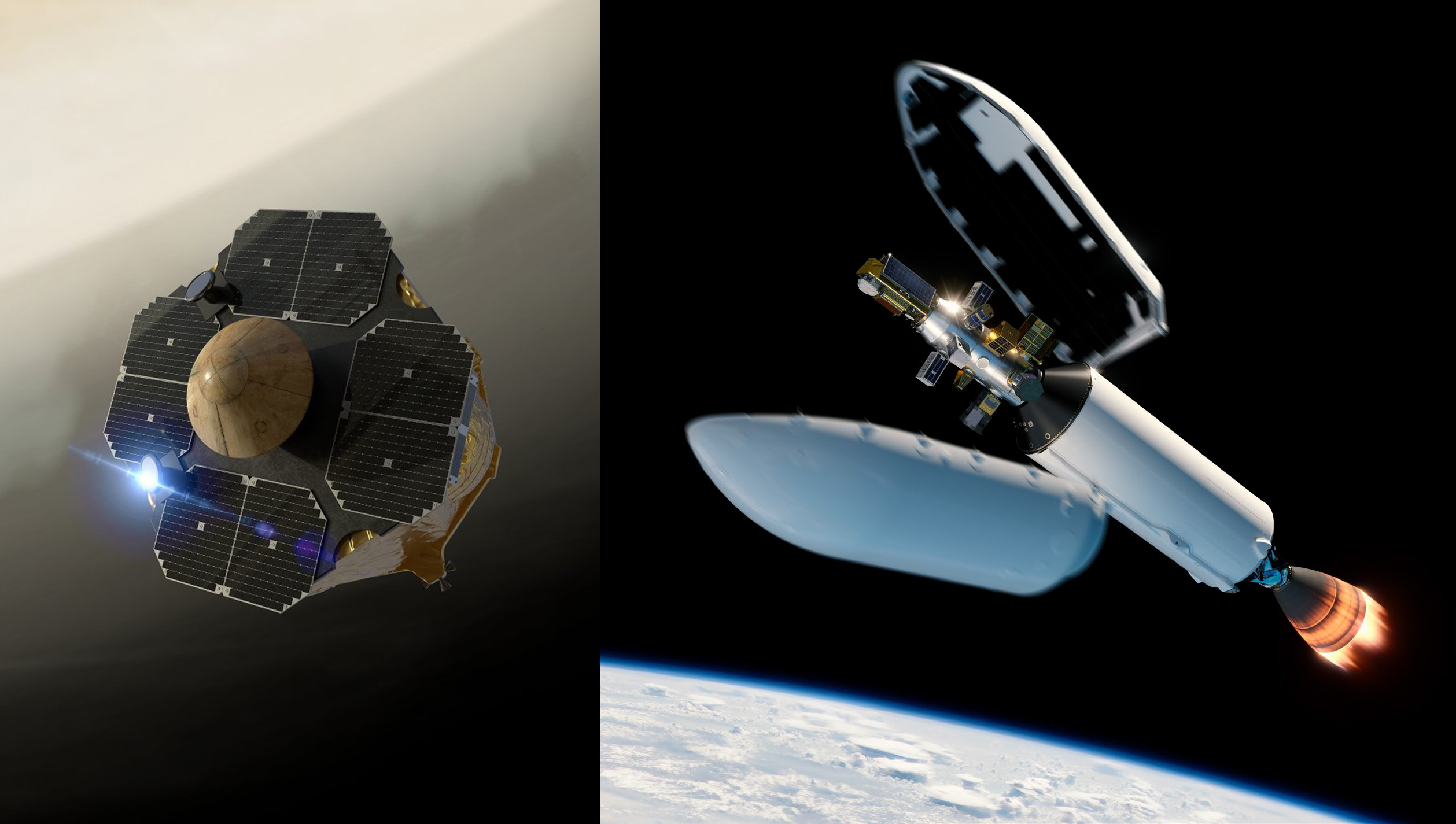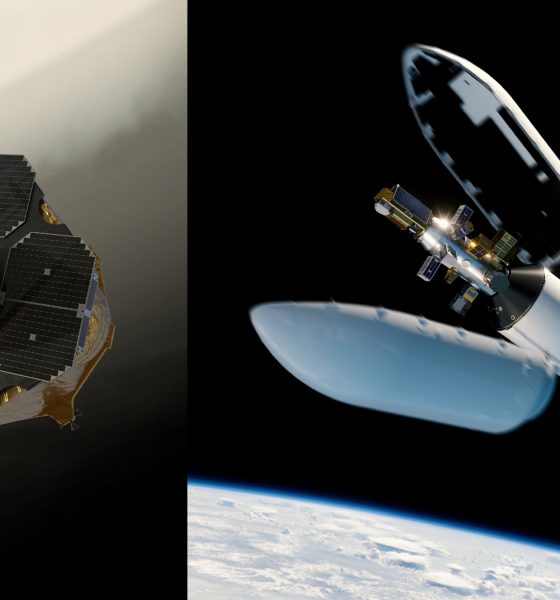

News
SpaceX to launch Varda Space’s first Rocket Lab-derived ‘space factory’ satellite
Startup Varda Space says it has contracted with SpaceX to launch its first satellite – based on a Rocket Lab bus called Photon – on a Falcon 9 rideshare mission in early 2023.
Founded in late 2020, Varda Space says its mission “is to build the first space factory” – or, to be more precise, the first all-in-one space factory. While far from the commercial orbital laboratory many at NASA would like to paint it as, the joint NASA-Russia International Space Station (ISS) routinely hosts payloads from paying customers, some of which are focused on manufacturing (albeit at an absurdly low volume) materials that can only be made in microgravity (i.e. ‘zero-G’). The products those experiments or miniature factories produce are then returned to Earth on one of SpaceX’s Dragons – still the only spacecraft in existence capable of delivering large amounts of cargo from space to Earth more than a decade after its debut.
This is to say that orbital manufacturing is not exactly a new practice and has been ongoing – at a very, very small scale – for years through companies like Made In Space. What Varda Space wants to do, then, is repeat – and, nominally, expand that ISS-proven model. Rather than launching small experiments or mini-factories to the ISS, where a captive ISS crew is often available to troubleshoot or help maintain them, Varda wants to build its own small satellites with tiny reentry capsules capable of returning up to 100 kg (~220 lb) to Earth.
Two months after the company announced it had raised more than $53 million in funding, Varda Space now says that it will launch the first of its custom-built “space factories” on a Falcon 9 rideshare mission in Q1 2023. In August, Varda revealed that it had contracted with small launch company Rocket Lab to purchase three of its Photon satellite buses – each to serve as a sort of mothership for each Varda-built reentry capsule. Based on Rocket Lab’s successful Electron rocket kick stage, Photon adds solar panels, batteries, avionics, more propellant, and optional propulsion upgrades to create an off-the-shelf satellite bus capable of supporting and powering onboard payloads.
Instead of having to build and qualify their own satellites, Photon thus gives certain customers the opportunity to focus their time and resources on developing the payloads they want to deploy and services they want to operate. No need to reinvent the wheel, in other words. Varda Space appears to be the first company intent on fully taking advantage of that opportunity – and to great effect given that the startup has raised more than $50M less than a year after it was founded.
Additionally, with its SpaceX launch contract, Varda Space has also effectively revealed that Rocket Lab has no clause preventing Photon customers from launching their procured satellite buses on rockets not built by Rocket Lab. While dedicated small satellite launchers like Rocket Lab’s Electron offer some benefits, they do so at a huge premium. While an Electron launch carrying 200 kg (440 lb) to a sun-synchronous orbit (SSO) is believed to cost around $7.5M, a slot on a SpaceX rideshare to a similar (but not as perfectly tailored) orbit would cost the same customer about $1M – practically a magnitude cheaper.
Rocket Lab’s Photon likely costs just a few million dollars and comes by default with a propulsion system capable of refining the spacecraft’s orbit after a one-size-fits-all rideshare launch. That means that manifest a Photon-based satellite on a SpaceX rideshare could likely cut the cost of buying and launching a new satellite in half – and maybe further. The question, then, is whether Varda can take those potentially substantial cost savings and design and manufacture a tiny orbital reentry capsule that’s cheap enough to make its free-flying space factories competitive with the International Space Station (ISS).

News
Tesla FSD fleet is nearing 7 billion total miles, including 2.5 billion city miles
As can be seen on Tesla’s official FSD webpage, vehicles equipped with the system have now navigated over 6.99 billion miles.

Tesla’s Full Self-Driving (Supervised) fleet is closing in on almost 7 billion total miles driven, as per data posted by the company on its official FSD webpage.
These figures hint at the massive scale of data fueling Tesla’s rapid FSD improvements, which have been quite notable as of late.
FSD mileage milestones
As can be seen on Tesla’s official FSD webpage, vehicles equipped with the system have now navigated over 6.99 billion miles. Tesla owner and avid FSD tester Whole Mars Catalog also shared a screenshot indicating that from the nearly 7 billion miles traveled by the FSD fleet, more than 2.5 billion miles were driven inside cities.
City miles are particularly valuable for complex urban scenarios like unprotected turns, pedestrian interactions, and traffic lights. This is also the difference-maker for FSD, as only complex solutions, such as Waymo’s self-driving taxis, operate similarly on inner-city streets. And even then, incidents such as the San Francisco blackouts have proven challenging for sensor-rich vehicles like Waymos.
Tesla’s data edge
Tesla has a number of advantages in the autonomous vehicle sector, one of which is the size of its fleet and the number of vehicles training FSD on real-world roads. Tesla’s nearly 7 billion FSD miles then allow the company to roll out updates that make its vehicles behave like they are being driven by experienced drivers, even if they are operating on their own.
So notable are Tesla’s improvements to FSD that NVIDIA Director of Robotics Jim Fan, after experiencing FSD v14, noted that the system is the first AI that passes what he described as a “Physical Turing Test.”
“Despite knowing exactly how robot learning works, I still find it magical watching the steering wheel turn by itself. First it feels surreal, next it becomes routine. Then, like the smartphone, taking it away actively hurts. This is how humanity gets rewired and glued to god-like technologies,” Fan wrote in a post on X.
News
Tesla starts showing how FSD will change lives in Europe
Local officials tested the system on narrow country roads and were impressed by FSD’s smooth, human-like driving, with some calling the service a game-changer for everyday life in areas that are far from urban centers.

Tesla has launched Europe’s first public shuttle service using Full Self-Driving (Supervised) in the rural Eifelkreis Bitburg-Prüm region of Germany, demonstrating how the technology can restore independence and mobility for people who struggle with limited transport options.
Local officials tested the system on narrow country roads and were impressed by FSD’s smooth, human-like driving, with some calling the service a game-changer for everyday life in areas that are far from urban centers.
Officials see real impact on rural residents
Arzfeld Mayor Johannes Kuhl and District Administrator Andreas Kruppert personally tested the Tesla shuttle service. This allowed them to see just how well FSD navigated winding lanes and rural roads confidently. Kruppert said, “Autonomous driving sounds like science fiction to many, but we simply see here that it works totally well in rural regions too.” Kuhl, for his part, also noted that FSD “feels like a very experienced driver.”
The pilot complements the area’s “Citizen Bus” program, which provides on-demand rides for elderly residents who can no longer drive themselves. Tesla Europe shared a video of a demonstration of the service, highlighting how FSD gives people their freedom back, even in places where public transport is not as prevalent.
What the Ministry for Economic Affairs and Transport says
Rhineland-Palatinate’s Minister Daniela Schmitt supported the project, praising the collaboration that made this “first of its kind in Europe” possible. As per the ministry, the rural rollout for the service shows FSD’s potential beyond major cities, and it delivers tangible benefits like grocery runs, doctor visits, and social connections for isolated residents.
“Reliable and flexible mobility is especially vital in rural areas. With the launch of a shuttle service using self-driving vehicles (FSD supervised) by Tesla in the Eifelkreis Bitburg-Prüm, an innovative pilot project is now getting underway that complements local community bus services. It is the first project of its kind in Europe.
“The result is a real gain for rural mobility: greater accessibility, more flexibility and tangible benefits for everyday life. A strong signal for innovation, cooperation and future-oriented mobility beyond urban centers,” the ministry wrote in a LinkedIn post.
News
Tesla China quietly posts Robotaxi-related job listing
Tesla China is currently seeking a Low Voltage Electrical Engineer to work on circuit board design for the company’s autonomous vehicles.

Tesla has posted a new job listing in Shanghai explicitly tied to its Robotaxi program, fueling speculation that the company is preparing to launch its dedicated autonomous ride-hailing service in China.
As noted in the listing, Tesla China is currently seeking a Low Voltage Electrical Engineer to work on circuit board design for the company’s autonomous vehicles.
Robotaxi-specific role
The listing, which was shared on social media platform X by industry watcher @tslaming, suggested that Tesla China is looking to fill the role urgently. The job listing itself specifically mentions that the person hired for the role will be working on the Low Voltage Hardware team, which would design the circuit boards that would serve as the nervous system of the Robotaxi.
Key tasks for the role, as indicated in the job listing, include collaboration with PCB layout, firmware, mechanical, program management, and validation teams, among other responsibilities. The role is based in Shanghai.
China Robotaxi launch
China represents a massive potential market for robotaxis, with its dense urban centers and supportive policies in select cities. Tesla has limited permission to roll out FSD in the country, though despite this, its vehicles have been hailed as among the best in the market when it comes to autonomous features. So far, at least, it appears that China supports Tesla’s FSD and Robotaxi rollout.
This was hinted at in November, when Tesla brought the Cybercab to the 8th China International Import Expo (CIIE) in Shanghai, marking the first time that the autonomous two-seater was brought to the Asia-Pacific region. The vehicle, despite not having a release date in China, received a significant amount of interest among the event’s attendees.








